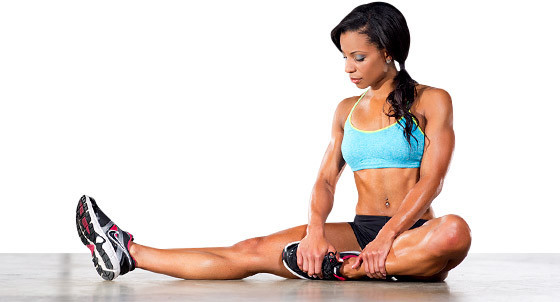If you're like many people who want to live healthier, you start a fitness program by lacing up your shoes and pounding the pavement. Whether you are training to improve your cardio or gearing up for a local race, you begin to up the mileage. After you throw in some hill work, you begin to notice your lower legs are throbbing. It gets so painful you can't run another step. Most likely, you're suffering from shin splints.
Shin splints, also known as "medial tibial stress syndrome" (MTSS), refers to pain felt along the inner edge of the tibia. Constant overuse from running or exercise can lead to inflammation of the muscles and tendons that attach to the tibia.
The tibialis posterior is the most common muscle involved. MTSS is the most common overuse injury of the lower leg. It usually occurs at the beginning of a fitness program, when the participant is not properly prepared for intense training.
Some factors that can cause shin splints include:
- Flat feet or pronated arches
- Improper or worn-out footwear
- Muscular imbalances (e.g., tight calves)
- Exercise that is too intense at the beginning of the program
- Poor body alignment

MTSS is the most common overuse injury of the lower leg. It usually occurs at the beginning of a fitness program, when the participant is not properly prepared for intense training.
The tibialis anterior muscle, which lies more laterally on the tibia, can also become inflamed and painful from overuse. If pain in the lower leg is persistent, a stress fracture of the tibia may be present. This can be ruled out by a bone scan or MRI.
An important condition that can mimic shin splints is compartment syndrome. This can develop from swelling within a leg compartment. Medical care should be sought to measure the pressure. This condition could require surgery if the pressure is too high.
Preventative Exercises
Try these moves if you've suffered from shin splints in the past or are starting a new training regimen.
1. Wall Shin Raises

Begin by standing with your back to a wall. Place your heels about a foot away from the wall while your body is resting on the wall. Begin to dorsiflex (bring toes up) both ankles while your heels remain in contact with the ground.
Stretch your toes up as far as possible. Lower your feet back toward the ground. Try to keep your toes from touching the ground. Repeat for 3 sets of 10-15 reps.
2. Heel Step-Downs

Begin with an erect body position, placing your feet about shoulder-width apart. Take a step forward with one foot. The length of the step should be a normal walking step. When your heel makes contact with the ground, stop your foot from fully plantar flexing.
Using your shin muscles, keep the sole of the foot from contacting the ground. Your toes should not descend more than an inch or so. Step back to the starting position, repeat for 10-15 reps, and switch legs.
3. Calf Stretches

Stretching your calves could help alleviate shin splints. Be proactive with this stretch. Begin by sitting on the floor with your legs straight in front of you.
Loop an exercise band or towel around the bottom of your feet and gently pull back into dorsiflexion. Hold for 10-15 seconds. Repeat 2-3 times on each leg.
4. Shin Resistance Exercise

Strengthen your anterior lower leg and help reduce the recurrence of shin splints with this stretch. Sit on the floor and loop an exercise band around the front of your feet with the other end of the band wrapped around a table or stationary object you can use for support.
Dorsiflex your foot against the resistance. Do 3 sets of 10-15 reps. Increase the resistance by using heavier bands or doubling your reps to the 20-30 range.

